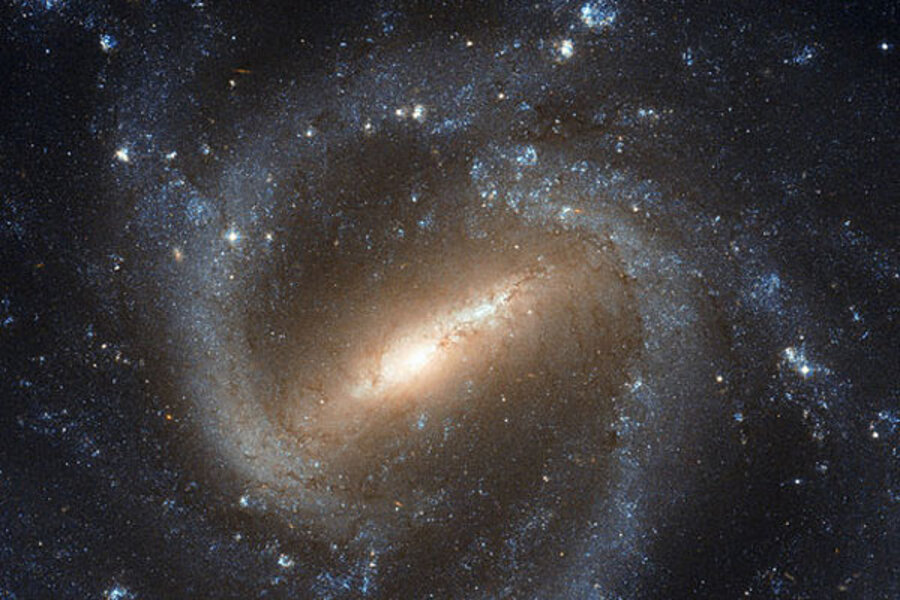Does the Milky Way galaxy have an evil twin?
Loading...
An uncanny twin of our own Milky Way galaxy takes center stage in a new cosmic portrait by the Hubble Space Telescope unveiled today (Feb. 3).
The amazing photo shows the galaxy NGC 1073, a barred spiral like our own Milky Way. The galaxy is located 55 million light-years away in the constellation of Cetus (The Sea Monster).
By looking at cosmic wonders thought to be similar to our own galactic home, astronomers hope to learn more about the Milky Way, which we can only see from the inside.
The bars, made of dense lines of stars at the galaxies' centers, are thought to form as gravity causes density waves that push gas inward, supplying material for new stars, Hubble mission researchers explained in a statement. This inflow of gas can also feed the hungry giant black holes thought to inhabit the centers of most such galaxies.
The universe is rife with spiral galaxies both with and without central bars. Scientists think these might form as galaxies age, in part because very distant galaxies dating from the universe's early days tend not to have them. In fact, about one-fifth of the spiral galaxies from early universe contain bars, while more than two-thirds of spirals seen today have them, researchers said. [See the photo and video of the Milky Way's twin]
Adding to this idea is the fact that bars are more often found in galaxies full of older, redder stars, and less often in galaxies with bluer, younger stars, researchers said.
The new photo of galaxy NGC 1073 contains more than just an eye-popping mirror view of our Milky Way.
The Hubble image also reveals an odd, rough ring-like structure around the galaxy that is the result of recent star formation, according to a photo description. A bright X-ray source known as IXO 5 is located inside the ring and is most likely a binary system containing a star and black hole locked in orbit around each other.
At the top of the image are several objects with a reddish hue, each of which is a distant galaxy lurking far beyond NGC 1073, researchers said. Then there are the three extra bright objects, which are strange interlopers that do not belong to galaxy NGC 1073 or our own Milky Way.
"In fact they are not stars at all. They are quasars, incredibly bright sources of light caused by matter heating up and falling into supermassive black holes in galaxies literally billions of light-years from us," Hubble researchers explained. "The chance alignment through NGC 1073, and their incredible brightness, might make them look like they are part of the galaxy, but they are in fact some of the most distant objects observable in the universe."
The Hubble Space Telescope is a joint project by NASA and the European Space Agency. It has been snapping amazing photos of the universe since its launch in 1991.
Follow SPACE.com for the latest in space science and exploration news on Twitter @Spacedotcom and on Facebook.







